docker-compose部署
定位好项目路径
进入到你到项目目录下
bash
> cd /{your_project_root_location}/
> ls
PowerX PowerXDocker PowerXDashboard编译和配置后端项目
1、 生成Linux系统里的powerx和powerxctl可执行文件
方式一:使用IDE(推荐Goland)来编译执行文件
执行Makefile里的编译命令: app-build-linux
bash
> cd PowerX/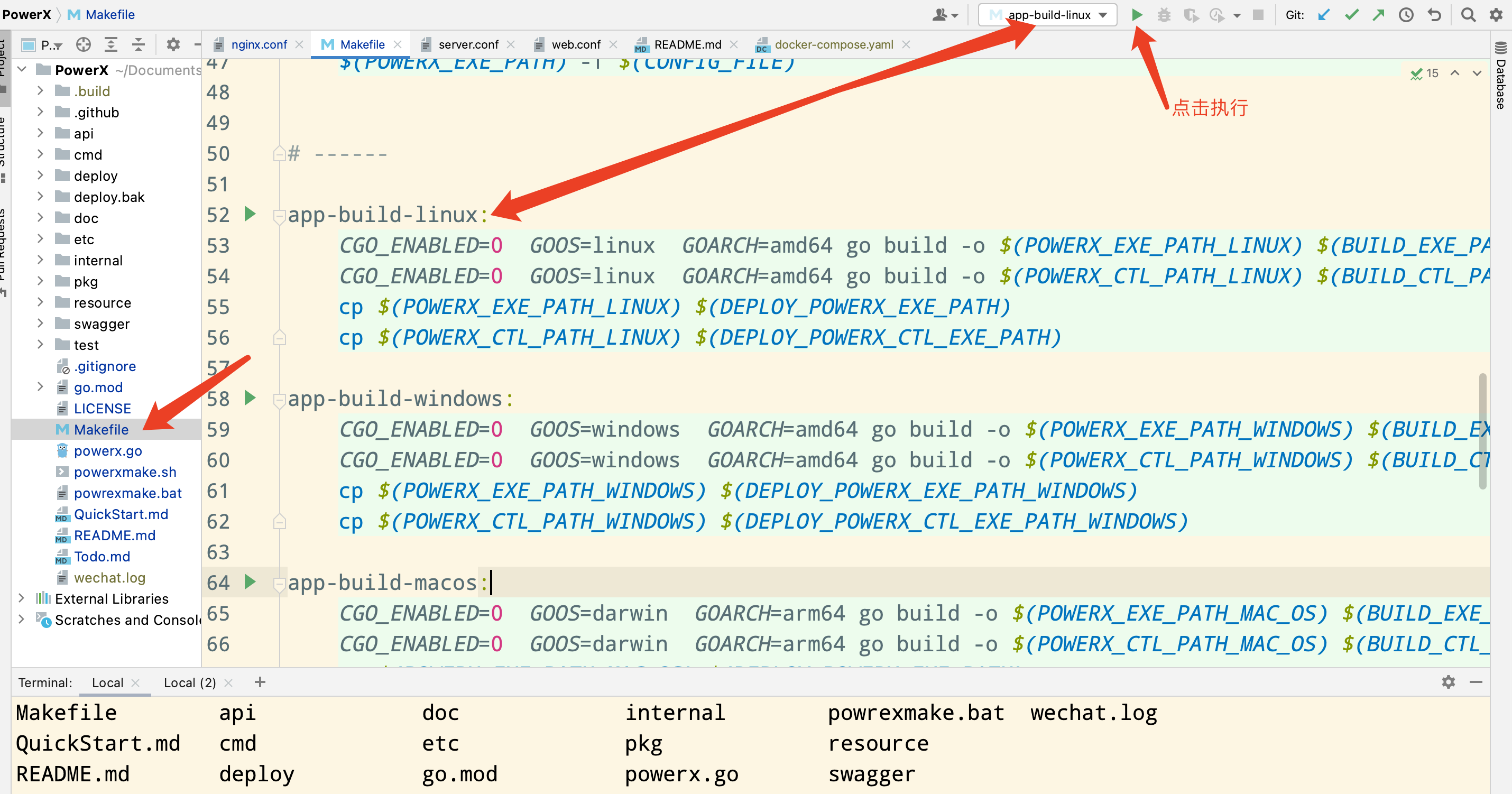
完成后,会在当前目录下生成.build目录
bash
> tree .build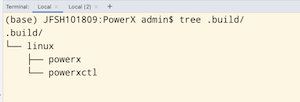
如果使用Makefile编译的,会自动拷贝powerx和powerxctl文件到PowerXDocker目录下
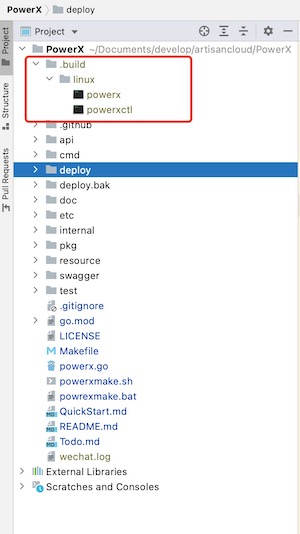
方式二: 使用命令编译执行文件
使用命令执行Makefile里的编译命令: app-build-linux
bash
# 编译Linux环境执行文件 linux环境:
> CGO_ENABLED=0 GOOS=linux GOARCH=amd64 go build -o .build/linux/powerx cmd/server/powerx.go
> CGO_ENABLED=0 GOOS=linux GOARCH=amd64 go build -o .build/linux/powerxctl cmd/ctl/powerxctl.go
# 编译Linux环境执行文件 windows环境:
> CGO_ENABLED=0 GOOS=windows GOARCH=amd64 go build -o .build/windows/powerx cmd/server/powerx.go
> CGO_ENABLED=0 GOOS=windows GOARCH=amd64 go build -o .build/windows/powerxctl cmd/ctl/powerxctl.go
# 编译Linux环境执行文件 mac环境:
> CGO_ENABLED=0 GOOS=darwin GOARCH=arm64 go build -o .build/darwin/powerx cmd/server/powerx.go
> CGO_ENABLED=0 GOOS=darwin GOARCH=arm64 go build -o .build/darwin/powerxctl cmd/ctl/powerxctl.go
# 编译好后,拷贝.build/${GOOS}目录下的文件到 PowerXDocker 目录下
#以下是linux环境
> cp .build/linux/powerx ../PowerXDocker/powerx
> cp .build/linux/powerxctl ../PowerXDocker/powerxctl1 添加docker-compose.yaml文件
bash
> cd /{your_project_root_location}/PowerXDocker/
> cp docker-compose-example.yaml docker-compose.yamldocker-compose.yaml内容参考如下
yaml
version: '3.8'
services:
postgres:
image: postgres:latest
container_name: postgres-PowerX
environment:
POSTGRES_USER: PowerX
POSTGRES_PASSWORD: PowerXpw
POSTGRES_DB: PowerX
volumes:
- ./data/postgres:/var/lib/postgresql/data
ports:
- "5432:5432"
networks:
- PowerX-network
healthcheck:
test: ["CMD-SHELL", "pg_isready -U PowerX"]
interval: 10s
retries: 5
redis:
image: redis:latest
container_name: redis-PowerX
ports:
- "6379:6379"
networks:
- PowerX-network
healthcheck:
test: ["CMD", "redis-cli", "ping"]
interval: 30s
timeout: 10s
retries: 5
minio:
image: minio/minio:latest
container_name: minio-PowerX
command: server --console-address ":9090" /mnt/data
environment:
MINIO_CONFIG_ENV_FILE: /etc/config.env
volumes:
- ./data/minio:/mnt/data
- ./etc/minio.env:/etc/config.env
ports:
- "9000:9000"
- "9090:9090"
networks:
- PowerX-network
server:
build:
context: ./PowerX
dockerfile: deploy/docker/Dockerfile
container_name: PowerX-server
volumes:
- ./etc/powerx.yaml:/app/etc/powerx.yaml
ports:
- "8888:8888"
networks:
- PowerX-network
depends_on:
redis:
condition: service_healthy
postgres:
condition: service_healthy
healthcheck:
test: ["CMD", "nc", "-z", "localhost", "8888"]
interval: 30s
timeout: 10s
retries: 5
web:
build:
context: ./PowerXDashboard
dockerfile: deploy/docker/Dockerfile
container_name: PowerX-web
ports:
- "3000:80"
networks:
- PowerX-network
depends_on:
postgres:
condition: service_healthy
server:
condition: service_healthy
network-tools:
image: nicolaka/netshoot:latest
container_name: network-tools
command: sleep infinity
networks:
- PowerX-network
networks:
PowerX-network:
driver: bridge你可以用其他编辑器来编辑docker-compose.yaml, 确保文件保存成功
2 添加etc/powerx.yaml
bash
# PowerXDocker是你当前的项目名称
查看PowerXDocker项目目录,进入etc复制powerx-example.yaml为powerx.yaml,然后按照自己的需求修改
> cd PowerXDocker/etc/
> cp powerx-example.yaml powerx.yaml
> vi powerx.yaml最新的配置,请参阅:powerx-example.yaml
3 修改minio.env的内容
bash
> vi etc/minio.envyaml
# MINIO_ROOT_USER and MINIO_ROOT_PASSWORD sets the root account for the MinIO server.
# This user has unrestricted permissions to perform S3 and administrative API operations on any resource in the deployment.
# Omit to use the default values 'minioadmin:minioadmin'.
# MinIO recommends setting non-default values as a best practice, regardless of environment
MINIO_ROOT_USER=powerx
MINIO_ROOT_PASSWORD=powerxpw
# MINIO_VOLUMES sets the storage volume or path to use for the MinIO server.
MINIO_VOLUMES="/mnt/data"
# MINIO_SERVER_URL sets the hostname of the local machine for use with the MinIO Server
# MinIO assumes your network control plane can correctly resolve this hostname to the local machine
# Uncomment the following line and replace the value with the correct hostname for the local machine.
#MINIO_SERVER_URL="http://minio.example.net"编译前端web项目
切换到前端PowerXDashboard目录,并编译前端服务
bash
> cd /{your_project_root_location}/PowerXDashboard/
# node版本要在v20.x以上
> node -v
v20.4.0
#确保已经安装好npm
> npm i
或
> yarn install
> npm run build执行完成后会在当前目录有一个dist目录
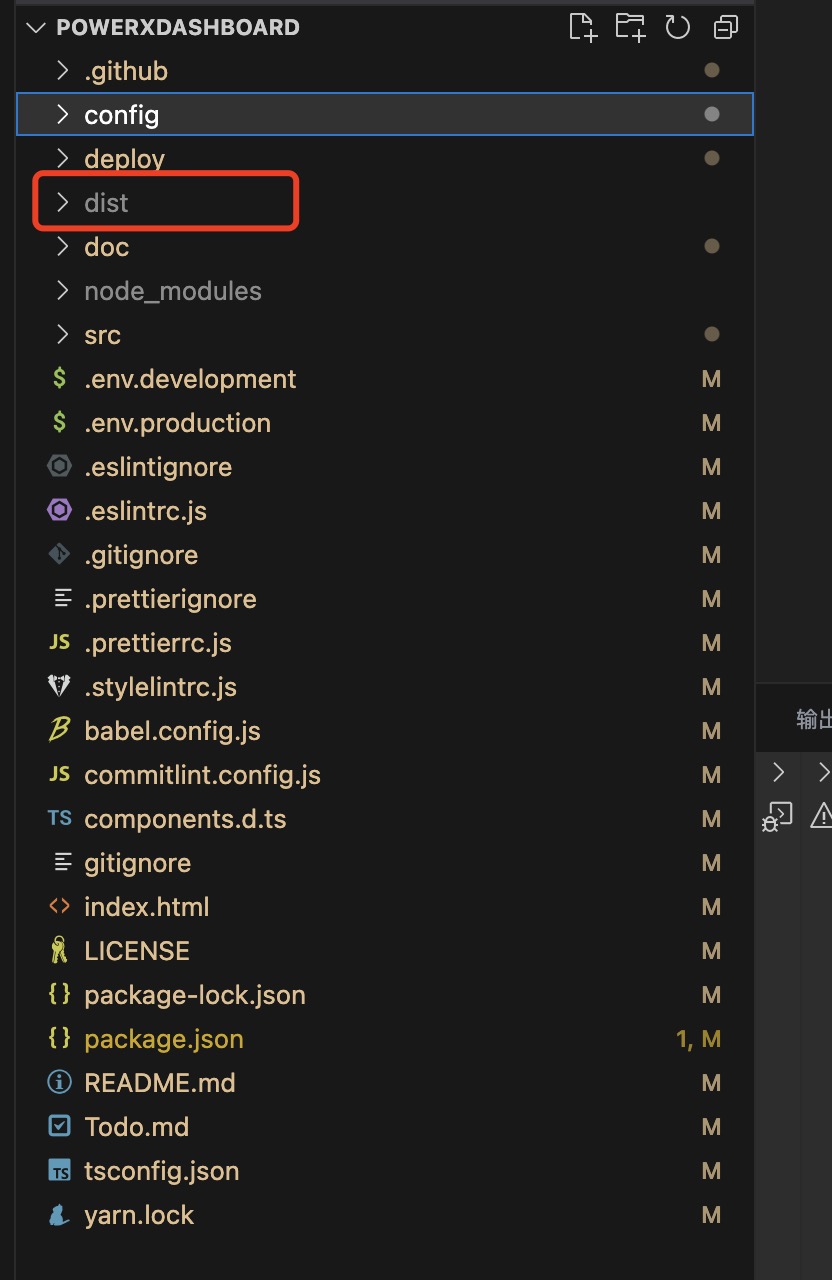
bash
# 拷贝dist目录到PowerX下面
> cp -r dist /{your_project_root_location}/PowerXDocker/dashboard/创建挂载的data目录
bash
#该目录是用于存放数据的
> cd PowerXDocker
> mkdir data请先使用powerx.com的域名作为本地劫持访问域名:
PowerX默认使用两个域名来作为前后端分离机制
http://api.powerx.com 作为后台api域名
http://dashboard.powerx.com 作为后端网页的访问入口
所以我们没有使用localhost作为默认启动,也是希望让用户先熟悉一下配置域名访问的过程。 
bash
# mac/linux 修改的hosts路径
> sudo vi /etc/hosts
# windows下使用powershell 修改的hosts路径
# 请使用管理员身份打开powershell
# 请确保你能定位到hosts路径
> vi C:\Windows\System32\drivers\etc\hosts
# 在hosts文件中,添加两个劫持域名到本地127.0.0.1
127.0.0.1 api.powerx.com
127.0.0.1 dashboard.powerx.com启动服务
查看并且使用 docker-compose up -d启动
bash
# 运行前先确保本地docker服务已经正常启动
> cd /{your_project_root_location}/PowerXDocker
> docker-compose build --no-cache
> docker-compose up -d
...web浏览
打开浏览器,输入 dashboard.powerx.com(docker-compose默认设置了80端口)
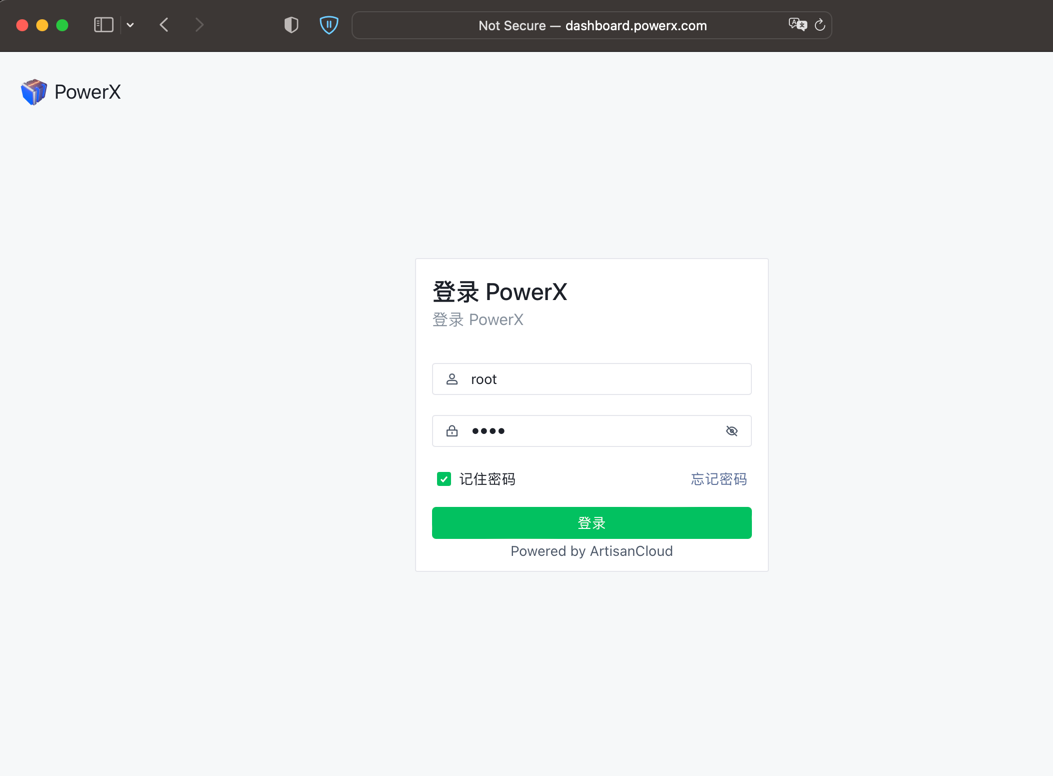
请确保后台PowerX是启动状态,输入账号root,密码root登陆
 PowerX
PowerX